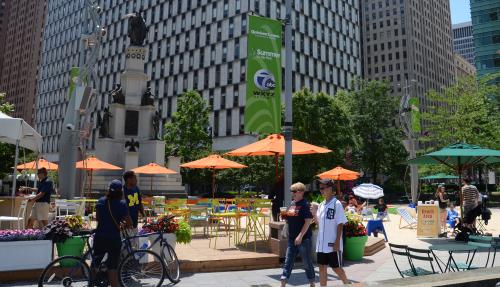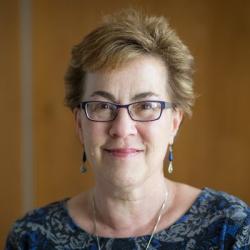The nation is seeing accelerating gaps in economic opportunity and prosperity between more educated, tech-savvy, knowledge workers congregating in the nation’s “superstar” cities (and a few university-town hothouses) and residents of older industrial cities and the small towns of “flyover country.” These growing divides are shaping public discourse, as policymakers and thought leaders advance recipes to foster economic opportunity in non-coastal communities.
Given this context, interest is growing in place-based economic development strategies that are successfully transforming midsized Heartland communities into home-grown talent hubs.
New findings from Kalamazoo, Mich., and other communities that have adopted human capital-based strategies to rebuild and repopulate their communities are a central feature of the W. E. Upjohn Institute’s (Upjohn’s) place-based research initiative and its recent report, Building Shared Prosperity: How Communities Can Create Good Jobs for All.
In 2005, Kalamazoo, home to the nation’s first local taxpayer-funded free public high school (1858), launched the nation’s first community-wide, universal free higher education guarantee. The Kalamazoo Promise is available to graduates of the Kalamazoo Public Schools (KPS) district, which includes all of the city of Kalamazoo and parts of several other small municipalities. The Promise provide KPS graduates up to four years of tuition at Michigan public colleges, universities, and community colleges, and tuition subsidies for selected independent Michigan colleges and universities.
Evaluations of the Promise conducted by Upjohn and others demonstrate its ability to boost not only higher education attainment for participants, but also community economic development, as the city and school district experienced a reversal in decades-long out-migration (an elusive goal urban policies have long sought).
While it is still too soon to draw clear conclusions, early indicators suggest that well-designed Promise programs can address one of the most challenging dynamics in mid-tier communities: the continued exodus of home-grown talent, often after realizing a high-quality higher education at local colleges and universities.
Early indicators suggest that well-designed Promise programs can address one of the most challenging dynamics in mid-tier communities: the continued exodus of home-grown talent, often after realizing a high-quality higher education at local colleges and universities.
Since Kalamazoo set its course, nearly 150 communities across the country have sought to replicate this human capital-led, place-based economic development strategy. While differing in program design and execution, communities from Buffalo, N.Y. to New Haven, Conn., El Dorado, Ark. to Pittsburgh, have realized some of the same salutary effects on education and economic development through their own Promise programs.
Many more communities are like Kalamazoo, having over time (or more suddenly and dramatically) lost employment in anchor industries as globalization washed over America’s interior. These communities are at the epicenter of growing economic anxiety and populist disaffection with today’s economic status quo. Several lessons emerge from Upjohn’s recent analysis focusing on creating good jobs for residents of these places:
Form should follow function. Place-based scholarship programs must be designed in light of desired, and sometimes differing, goals. For example, a program chiefly aimed at reviving a city’s public school district should restrict scholarships to those district’s graduates. If, however, a desired goal is to create greater attachment to the community overall, all schools, public, private, and parochial, can be included. If the community is looking to advance specific local workforce development goals, the higher education scholarship might be restricted to local institutions, but these do not necessarily have to be colleges. Birmingham, Ala., for instance, has designed its Promise program for graduates of Birmingham City Schools to support not only higher education, but also apprenticeships with local employers. If the community instead seeks primarily to attract new families, greater freedom in college choices, including four-year college options, will be more effective.
It takes more than a Promise to really build human capital. A simple, easily understood guarantee of free higher education certainly helps those students and families equipped to pursue it. But if a community is serious about dramatically enhancing college access and completion—particularly among “first-time” college-going families—a variety of support services including guidance in navigating the process, mentorships, and support for necessities like food, child-care, and transportation are important.
Smart Promise programs are just one part of a wider urban strategy. While Kalamazoo’s Promise program serves as a centerpiece of the city’s economic development strategy, the community also smartly executed other elements of an economic development playbook. These include investments in downtown development to create a walkable, multi-use core; programs to retain scientific talent from the area’s historic bioscience firms and vanished anchors to seed new bioscience startups; and innovation in the delivery and financing of basic municipal and human services, including workforce development. These efforts have worked in concert to nurture a new round of economic activity and both attract and keep talent.
Leveraging a community’s assets to foster a new era of economic success is central to the rebirth of many of America’s once proud, now flagging, communities. A community’s human capital—its people—is its most powerful asset, and emulating the success of Kalamazoo and other Promise communities can provide a powerful lever for economic change.








Commentary
How Promise programs can help former industrial communities
July 18, 2019